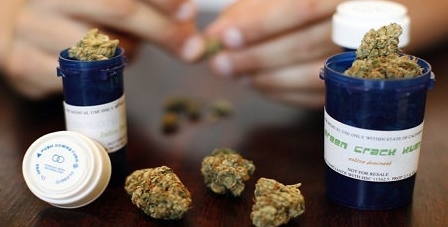Despite public education campaigns, people in Illinois are still using synthetic weed, then getting hospitalized with bleeding eyes and ears
06/13/2018 / By Ralph Flores

Marijuana, in its natural form, is known to provide a ton of medical and health-promoting properties. It’s also pretty cheap and can be grown in your backyard – which, of course, isn’t fun for Big Pharma, makers of synthetic cannabinoids that parade as safer alternatives.
There’s just one problem – they’re not, as evidenced by the incidents that unfurled in Illinois this year.
According to a report from the Illinois Department of Public Health (IDPH), at least 70 people have been treated because of unexplained bleeding after smoking synthetic cannabinoids since March 30. Two people have already died from the incident.
Patients who were hospitalized showed symptoms that included “coughing up blood, blood in urine, severe bloody nose, and/or bleeding gums.” At least nine people were found to have brodifacoum, a lethal anticoagulant used in rat poison, in their system. In extreme cases, this substance can lead to severe bleeding, a result of the body’s inability to heal itself through clotting.
Incidents of severe bleeding related to synthetic cannabinoid use started on March 10, according to Mike Wahl, medical director for the Illinois Poison Center. “We occasionally get them from suicide overdoses,” he added. “We’d get maybe one once or twice a decade.”
Fake weed, real danger
The culprit, of course, is synthetic cannabinoids, also known as K2 or spice. While these man-made chemicals are made to mimic the effects of tetrahydrocannabinol (THC), the main active ingredient in marijuana, they come with unknown health risks. They are available in various forms and are readily obtainable all year round. In the U.S., synthetic cannabinoids can be found in most commercial areas such as gas stations, convenience stores, drug paraphernalia stores, and online, according to the IDPH.
For Allison Arwady, the chief medical officer of the Chicago Department of Public Health (CDPH), these chemicals are “potentially life-threatening” and not to be experimented with. She reported that cases related to synthetic cannabinoid use usually include severe bleeding, rapid heart rate, and hallucinations. People who have been taking fake weed and who notice bleeding and bruising are advised to go to the emergency room to get themselves checked.
The effects of synthetic cannabinoids linger even after treatment. Once a patient is discharged from the hospital, he will have to undergo regular blood tests to make sure that the toxins are completely removed from his body – a process that could take weeks or even months, explained Wahl. If the patient does not adhere to medication, he could relapse and develop severe bleeding in as little as two days. (Related: Why lab-made synthetic marijuana is NOTHING like actual cannabis.)
Both the IDPH and the CDPH are investigating the outbreak to learn more about the drugs used and where they were produced. This will allow health officials to “protect other people from getting sick later on,” Wahl added.
The IDPH is also urging people with a reaction to synthetic cannabinoids to call 9-1-1 or go to the emergency department immediately and inform their healthcare providers about their symptoms, as well their use of synthetic cannabinoids.
Marijuana is closer to the OK
There’s still a silver lining for marijuana use in Illinois. This June, lawmakers approved a bill allowing the use of medical marijuana instead of prescription painkillers. Criminal background checks for patients will also be removed. The bill, once Gov. Bruce Rauner signs it into law, would allow the purchase of medical marijuana based on doctors’ orders rather than bureaucratic approval.
The bill, which was passed with bipartisan support, could reduce the number of opioid-related deaths in the state, which have reached 11,000 since 2008. This was echoed by the original sponsor of the bill, state Sen. Don Harmon, who said, “The only two things I know for certain is: Opioids kill people, and marijuana does not.”
Learn how Illinois decides to move forward with its measure for medical marijuana by following MedicalMarijuanaUpdate.com today.
Sources include:
Tagged Under: Big Pharma, cannabis, fake weed, Illinois, marijuana, medical marijuana, Opioids, Pot, spice, synthetic cannabinoids, synthetic marijuana, THC, weed
















